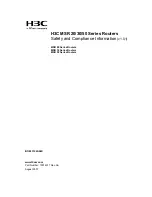
MicroStrain, Inc.
8
memory during LDC. LDC can either be finite (have a user defined start and end
time) or continuous (continue until the power is cycled on the node).
•
Node:
The node is the wireless transceiver that carries the sensors and provides
communication with the base station. The G-Link®, V-Link®, SG-Link® and
TC-Link® are all nodes.
•
Ping:
A byte is transmitted by the base station to a particular node and the node
responds by echoing the byte indicating communication exists between the base
station and the node.
•
Plugins:
Software ‘wizards’ which aid in the configuration of the node’s sensors.
•
Range Test:
A continuous string of pings used to validate communication
between the base station and the node over distance and obstruction.
•
Read/write EEPROM:
Commands transmitted to the node to read or write
parameters stored in the node’s operating system.
•
SEDT:
Sensor Event Driven Trigger is a method whereby a ceiling or floor
output threshold can be set in the node to automatically trigger datalogging.
•
Sleep:
A command transmitted to the node to set a node into sleep configuration.
•
Streaming:
Streaming is a node action whereby all active channels (and the
sensors attached to them) are sampled and the data acquired is transmitted to the
base station and software. The data is not written to non-volatile memory during
streaming. Streaming can either be finite (have a user defined start and end time)
or continuous (continue until the power is cycled on the node).
•
Sweep Rate:
A node setting which determines the number of times all active
channels are sampled during a finite sampling session.
•
Trigger:
A command transmitted to the node to begin a datalogging session.
•
Wake:
A command transmitted to the node to recover a node in sleep
configuration.









































